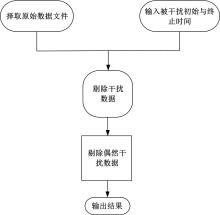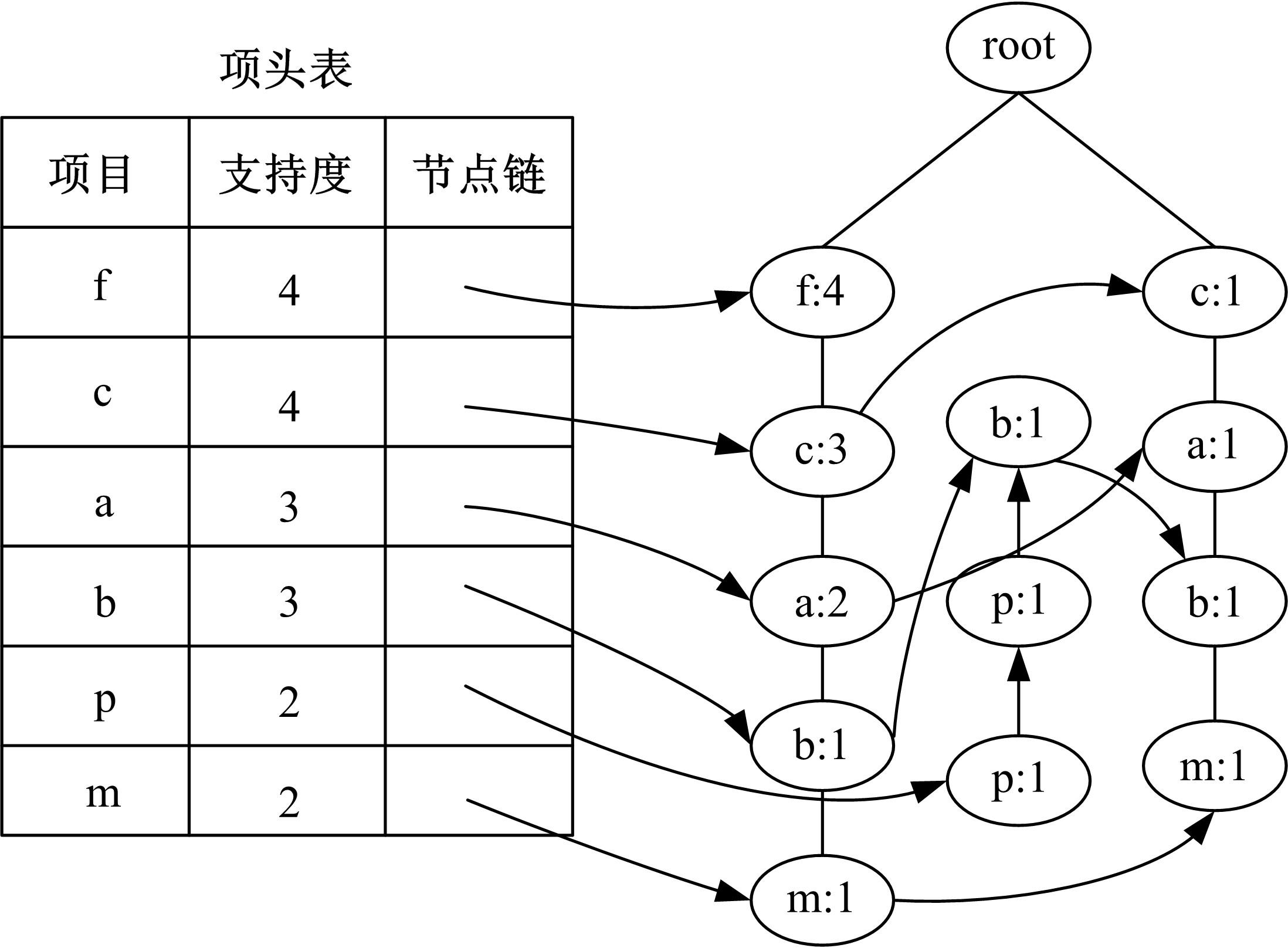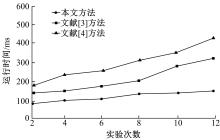Journal of Jilin University(Engineering and Technology Edition) ›› 2022, Vol. 52 ›› Issue (4): 885-890.doi: 10.13229/j.cnki.jdxbgxb20200938
Multiple source data selective integration algorithm based on frequent pattern tree
- School of Politics,National Defence University,Shanghai 200433,China
CLC Number:
- TP391
| 1 | 韩萌, 丁剑. 数据流频繁模式挖掘综述[J]. 计算机应用, 2019, 39(3): 719-727. |
| Han Meng, Ding Jian. Survey of frequent pattern mining over data streams[J]. Journal of Computer Applications, 2019, 39(3): 719-727. | |
| 2 | 魏怀明. 模糊关联规则结合动态树重建的数据流挖掘[J]. 控制工程, 2018, 25(12): 2263-2268. |
| Wei Huai-ming. Data stream mining using fuzzy association rules and dynamic tree reconstruction[J]. Control Engineering of China, 2018, 25(12): 2263-2268. | |
| 3 | 陈涛. 基于教与学优化算法的基因表达谱选择性集成分类[J]. 科学技术与工程, 2018, 18(21): 232-238. |
| Chen Tao. A selective ensemble method based on teaching-learning-based optimization for classifying gene expression profiles[J]. Science Technology and Engineering, 2018, 18(21): 232-238. | |
| 4 | 李尧, 王志海, 孙艳歌, 等. 一种基于深度属性加权的数据流自适应集成分类算法[J]. 山东大学学报: 工学版, 2018, 48(6): 44-55, 66. |
| Li Yao, Wang Zhi-hai, Sun Yan-ge, et al. An adaptive ensemble classification method based on deep attribute weighting for data stream[J]. Journal of Shandong University(Engineering Science), 2018, 48(6): 44-55, 66. | |
| 5 | 侯莉莎. 大数据集合中冗余特征排除的聚类算法设计[J].现代电子技术, 2018, 41(14): 48-50, 54. |
| Hou Li-sha. Design of clustering algorithm for redundancy feature removal in big data sets[J].Modern Electronics Technique, 2018, 41(14): 48-50, 54. | |
| 6 | 杨阳, 丁家满, 李海滨, 等. 一种基于Spark的不确定数据集频繁模式挖掘算法[J]. 信息与控制, 2019, 48(3): 257-264. |
| Yang Yang, Ding Jia-man, Li Hai-bin, et al. A spark-based frequent patterns mining algorithm for uncertain datasets[J]. Information and Control, 2019, 48(3): 257-264. | |
| 7 | 吴磊, 程良伦, 王涛. 基于事务映射区间求交的高效频繁模式挖掘算法[J]. 计算机应用研究, 2019, 36(4): 1031-1035, 1050. |
| Wu Lei, Cheng Liang-lun, Wang Tao. Efficient frequent pattern mining algorithm based on interval interaction and transaction mapping[J]. Application Research of Computers, 2019, 36(4): 1031-1035, 1050. | |
| 8 | 郑玉艳, 田莹, 石川. 一种元路径下基于频繁模式的实体集扩展方法[J]. 软件学报, 2018, 29(10): 2915-2930. |
| Zheng Yu-yan, Tian Ying, Shi Chuan. Method of entity set expansion based on frequent pattern under meta path[J]. Journal of Software, 2018, 29(10): 2915-2930. | |
| 9 | 陶晓玲, 亢蕊楠, 刘丽燕. 基于选择性集成的并行多分类器融合方法[J]. 计算机工程与科学, 2018, 40(5): 787-792. |
| Tao Xiao-ling, Kang Rui-nan, Liu Li-yan. A parallel multi-classifier fusion approach based on selective ensemble[J]. Computer Engineering and Science, 2018, 40(5): 787-792. | |
| 10 | 任永功, 高鹏, 张志鹏. 一种利用相关性度量的不确定数据频繁模式挖掘[J]. 小型微型计算机系统, 2019, 40(3): 623-627. |
| Ren Yong-gong, Gao Peng, Zhang Zhi-peng. Frequent patterns mining for uncertain data using correlation metric[J]. Journal of Chinese Computer Systems, 2019, 40(3): 623-627. | |
| 11 | 万芳, 胡东辉. 基于弱关联频繁模式的超限行为挖掘优化[J]. 北京交通大学学报, 2018, 42(2): 31-37. |
| Wan Fang, Hu Dong-hui. An optimization for overload behavior mining based on weakly correlated frequent patterns[J]. Journal of Beijing Jiaotong University, 2018, 42(2): 31-37. |
| [1] | Sheng-sheng WANG,Jing-yu CHEN,Yi-nan LU. COVID⁃19 chest CT image segmentation based on federated learning and blockchain [J]. Journal of Jilin University(Engineering and Technology Edition), 2021, 51(6): 2164-2173. |
| [2] | Hong-wei ZHAO,Zi-jian ZHANG,Jiao LI,Yuan ZHANG,Huang-shui HU,Xue-bai ZANG. Bi⁃direction segmented anti⁃collision algorithm based on query tree [J]. Journal of Jilin University(Engineering and Technology Edition), 2021, 51(5): 1830-1837. |
| [3] | Jie CAO,Xue QU,Xiao-xu LI. Few⁃shot image classification method based on sliding feature vectors [J]. Journal of Jilin University(Engineering and Technology Edition), 2021, 51(5): 1785-1791. |
| [4] | Chun-bo WANG,Xiao-qiang DI. Cloud storage integrity verification audit scheme based on label classification [J]. Journal of Jilin University(Engineering and Technology Edition), 2021, 51(4): 1364-1369. |
| [5] | Rong QIAN,Ru ZHANG,Ke-jun ZHANG,Xin JIN,Shi-liang GE,Sheng JIANG. Capsule graph neural network based on global and local features fusion [J]. Journal of Jilin University(Engineering and Technology Edition), 2021, 51(3): 1048-1054. |
| [6] | Qian-yi XU,Gui-he QIN,Ming-hui SUN,Cheng-xun MENG. Classification of drivers' head status based on improved ResNeSt [J]. Journal of Jilin University(Engineering and Technology Edition), 2021, 51(2): 704-711. |
| [7] | Yuan SONG,Dan-yuan ZHOU,Wen-chang SHI. Method to enhance security function of OpenStack Swift cloud storage system [J]. Journal of Jilin University(Engineering and Technology Edition), 2021, 51(1): 314-322. |
| [8] | Xiang-jiu CHE,You-zheng DONG. Improved image recognition algorithm based on multi⁃scale information fusion [J]. Journal of Jilin University(Engineering and Technology Edition), 2020, 50(5): 1747-1754. |
| [9] | HU Guan-yu, QIAO Pei-li. High dimensional differential evolutionary algorithm based on cloud population for network security prediction [J]. 吉林大学学报(工学版), 2016, 46(2): 568-577. |
| [10] | DONG Sa, LIU Da-you, LI Li-na, OUYANG Ruo-chuan, CHAI Xiao-li. Relational neighbor algorithm based on class propagation distributions for classification in networked data with heterophily [J]. 吉林大学学报(工学版), 2016, 46(2): 522-527. |
| [11] | ZHANG Hao, LIU Hai-ming, WU Chun-guo, ZHANG Yan-mei, ZHAO Tian-ming, LI Shou-tao. Detection method of vehicle in highway green toll lane based on multi-feature fusion [J]. 吉林大学学报(工学版), 2016, 46(1): 271-276. |
| [12] | WANG Zhong-yu, CAI Qing, WU Bing, LI Lin-bo. Queue length estimation for signalized intersections based on multi-source data [J]. 吉林大学学报(工学版), 2015, 45(4): 1088-1094. |
| [13] | SUN Zhong-hua, JIANG Bin, JIA Ke-bin. Detection of the road snow coverage status based on naive Bayesian classifier [J]. 吉林大学学报(工学版), 2013, 43(增刊1): 380-383. |
| [14] | TONG Jin, WANG Ya-hui, FAN Xue-mei, ZHANG Shu-jun, CHEN Dong-hui. Monitoring system of cold chain logistics for farm fresh produce [J]. 吉林大学学报(工学版), 2013, 43(06): 1707-1711. |
| [15] | ZHAO Hong-wei, CHEN Xiao, LONG Man-li, YUAN Shi-pei. Object classification algorithm based on improved PLSA [J]. 吉林大学学报(工学版), 2012, 42(增刊1): 231-235. |
|
||






